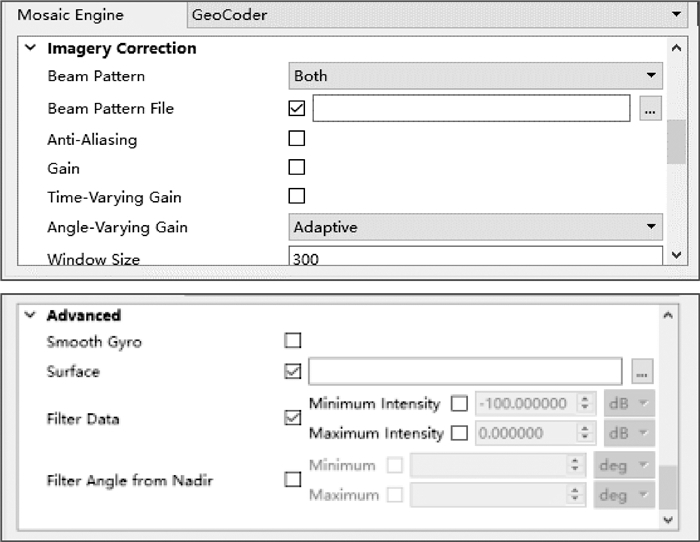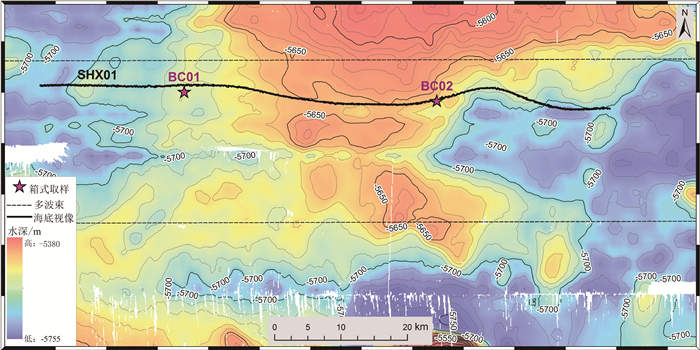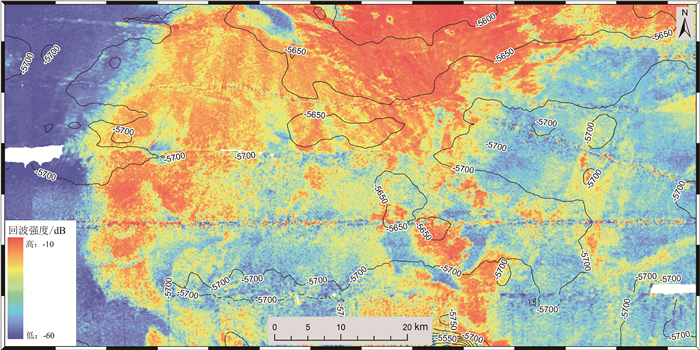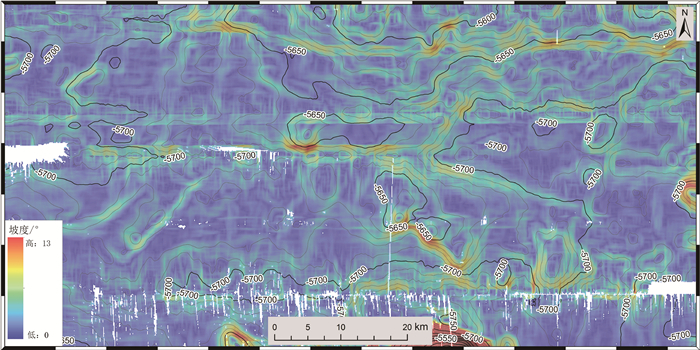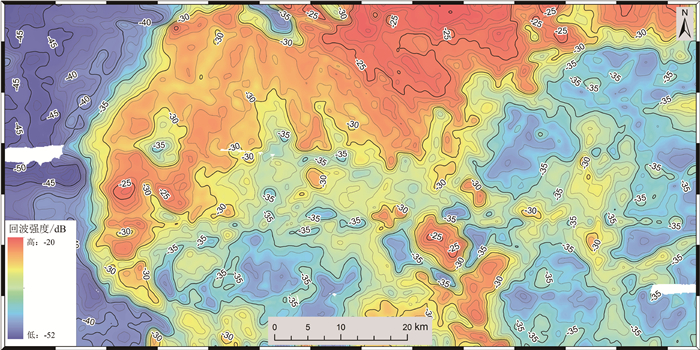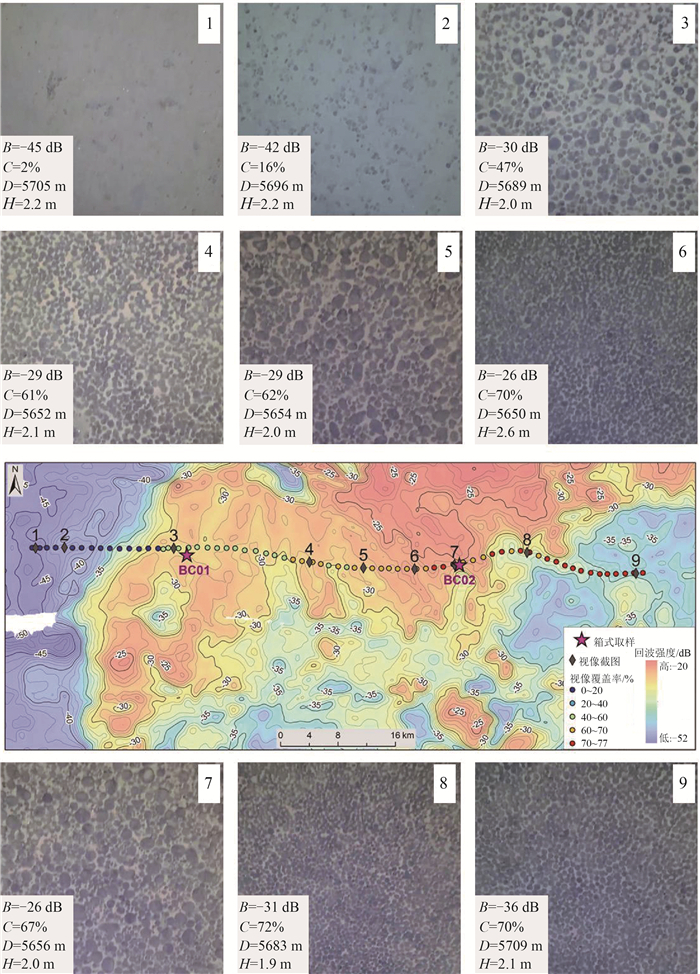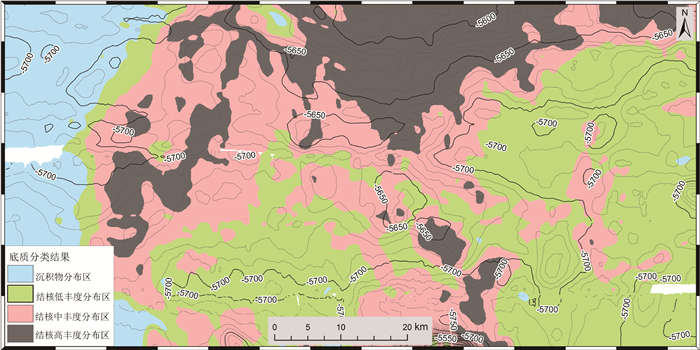Relation of the distribution of bottom polymetallic manganese nodules to multibeam backsactter in West Pacific
-
摘要:
西太平洋高丰度高覆盖率多金属结核的发现受到各国学者的高度关注,如何高效探测不同覆盖率和丰度的多金属结核分布特征是目前研究的重点。利用EM122多波束回波强度资料对西太平洋海盆结核分布特征进行分析,结果表明,回波强度的高低变化与结核覆盖率关系密切,而当结核覆盖率相当时,回波强度的高低变化反映了结核的粒径大小,其中大型结核(直径D>6 cm)较多时,回波强度值明显增大。利用最大似然分类方法对回波强度资料进行监督分类,得出深海沉积物、低丰度、中等丰度和高丰度结核空间分布,结果显示,深海粘土沉积区与丰度>>30 kg/m2的高丰度结核分布区多回波强度差异高达近20 dB。
Abstract:As the discovery of high abundance and high coverage of manganese nodules in West Pacific has attracted much attention of many countries, how to detect the distribution characteristics of manganese nodules with different coverage and abundance is the focus of current research.In our project, the multibeam backscatter intensity data acquired by EM122 system were used to analysis the distribution characteristics of nodules.The results indicate that the change of backscatter intensity is closely related to nodule coverage, while when the coverage is equal, the change of backscatter intensity reflects the size of the nodule, and when nodules are large (D>6 cm), the backscatter intensity increases obviously.Then the maximum likelihood supervised classification method was used to classify the backscatter intensity data.The results of classification reveal that spatial distribution of sediment, low abundance, medium abundance and high abundance nodules. Significantly, in the deep-sea basin, whereas obvious high-backscatter values are observed on areas of clay deposit, the important difference in backscatter between two geological classes is nearly 20 dB which are pelagic clay sediments and nodules with high abundance around 30 kg/m2 in the deep sea basin.
-
Key words:
- backscatter intensity /
- manganese nodules /
- abundance /
- seafloor acoustic classification /
- West Pacific
-

-
表 1 线性回归方差分析结果
Table 1. Result of variance analysis of linear regression
方差来源 偏差平方和 自由度 方差 F值 显著性 回归 14700.97 1 14700.97 31.12 高度显著 剩余 31654.02 67 472.448 总和 46354.99 68 -
[1] Cronan D S, Hodkinson R A, Miller S, et al. Manganese nodules in the EEZ's of island countries in the southwestern equatorial pacific[J]. Marine Geology, 1991, 98: 425-435. doi: 10.1016/0025-3227(91)90114-J
[2] Hein J R, Koschinsky A. Deep-ocean Ferromanganese Crusts and Nodules. Treatise on Geochemistry[M]. H D Holland and T K K Oxford, 2014.
[3] Hein J R, Spinardi F, Okamoto N, et al. Critical metals in manganese nodules from the Cook Islands EEZ, abundances and distributions[J]. Ore Geology Reviews, 2015, 68(1): 97-116. http://smartsearch.nstl.gov.cn/paper_detail.html?id=736ede268d0e4fbed2c5092b35695a57
[4] Machida S K, Fujinaga. Geology and geochemistry of ferromanganese nodules in the Japanese Exclusive Economic Zone around Minamitorishima Island[J]. Geochemical Journal, 2016, 50. http://ci.nii.ac.jp/naid/130005435144
[5] Machida S, Kikawa E, Ishill T, et al. Cross-ministerial Strategic Innovation Promotion Program (SIP), Next-generation Technology for Ocean Resources Exploration (ZIPANG in ocean)[R]. 2016.
[6] Spiess F N. Ocean acoustic remote sensing of the sea floor: Nat. Ocean. and Atmos. Adminis[J]. Workshop on Ocean Acoustic Remote Sensing Ⅱ, Seattle: 1980, 11-1, 11-38.
[7] Allen H M, Karl S. Acoustic soundings for manganese nodules[C]//Proc. 13th Annual Offshore Tech. Conf., OTC 4133.1981: 147-161.
[8] Moustier C D. Inference of manganese nodule coverage from SeaBeam acoustic backscattering data[J]. Geophysics, 1985, 50(6): 989-1001. doi: 10.1190/1.1441976
[9] Moustier C D. Beyond bathymetry: Mapping acoustic backscattering from the deep seafloor with Sea Beam[J]. Journal of Acoustical Society of American, 1986, 79(2): 316-331. doi: 10.1121/1.393570
[10] Huggett Q J, Somers M L. Possibilities of using the GLORIA system for manganese nodule assessment[J]. Marine Geophysical Research, 1988, 9: 255-264. doi: 10.1007/BF00309976
[11] Scanlon K M, Masson D G. Fe-Mn nodule field indicated Gloria, North of the Puerto Rico Trench[J]. Geo-Marine Letters, 1992, 12: 208-213. doi: 10.1007/BF02091840
[12] Weydert M M P. Measurements of the acoustic backscatter of selected areas of the deep seafloor and some implications for the assessment of manganese nodule resources[J]. Journal of Acoustical Society of America, 1990, 88: 350-366. doi: 10.1121/1.399910
[13] Chakraborty B, Kodagali V. Characterizing Indian Ocean manganese nodule-bearing seafloor using multi-beam angular backscatter[J]. Geo-Marine Letters, 2004, 24: 8-13. doi: 10.1007/s00367-003-0153-y
[14] Thomas K. Developing a strategy for the exploration of vast seafloor areas for prospective magnganese nodule fields[C]//Underwater Mining Institute, Shanghai, China, 2012.
[15] Tao C H, Jin X B, Bian A F, et al. Estimation of Manganese Nodule Coverage Using Multi-Beam Amplitude Data[J]. Marine Georesources & Geotechnology, 2015, 33: 283-288. http://www.tandfonline.com/doi/abs/10.1080/1064119X.2013.806973
[16] Polydoros A, Kim K. On the detection and classification of quadrature digital modulations in broad-band noise. IEEE Transactions on Communications[J]. 1990, 38(8): 1199-1211.
-



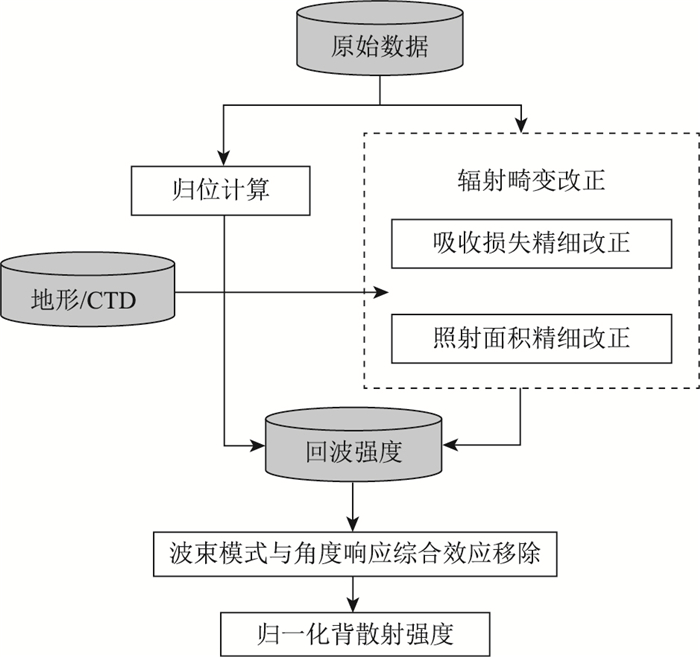
 下载:
下载:
